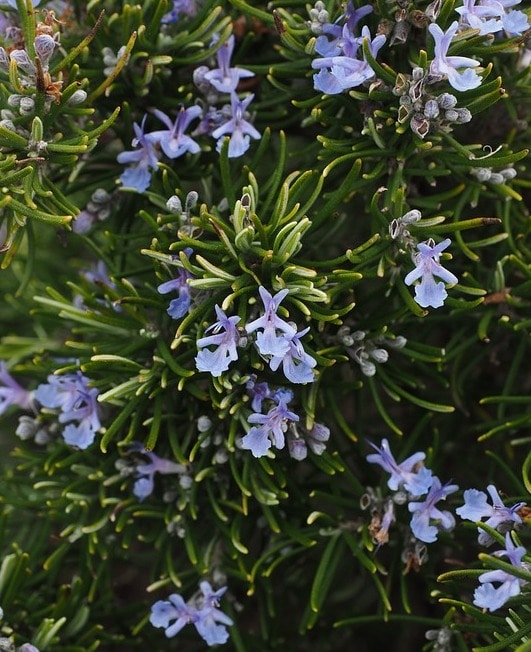A complete guide to growing rosemary hydropnically
Well, we are learning hydroponic system for many herb growing , now why not with grwoing rosemary hydroponically. The best tasting and most beneficial herbs are always freshly cut. Rosemary is a popular culinary hydroponic herb like hydroponic cilantro, hydroponic dill, hydroponic thyme, and hydroponic mint. Native to the Mediterranean, rosemary’s aromatic, needle-like leaves are a highly-prized ingredient in beauty products and in culinary arts. The fresh or dried evergreen leaves are customarily used in Italian cooking as an exclusively astringent flavour-enhancer. Herbal tea is often made with the leaves of the rosemary plant. One of the best things about rosemary aquaponics and rosemary hydroponics is you can commence new crops throughout the year, providing the seed or starter plants are readily accessible. Rosemary can be raised through both seeds as well as cuttings. As previously noted, Rosemary does not propagate well using the seeds it has a very low germination rate. Thus, starting from a cutting or buying an established plant has a higher success ratio than propagating from seed. what are we waiting for, let us get into the details of growing rosemary hydroponically in your garden.
Rosemary is a very slow-growing plant. Seed takes about 4-8 weeks to germinate. The plants take 15 months to mature, and years to grow to its full size. To speed up the process, people prefer to start new plants from the cuttings.

Propagating hydroponic rosemary
In further reading, we will give answers to questions like How to grow rosemary and how to grow rosemary indoors.
As recommended start growing rosemary from cuttings, you can get a cutting of about 10 cm long that has been cut below a leaf node on a slight angle. Rooting hormone is not compulsory, but media warmth must be maintained at 24 C you can also use a heating mat. Cutting stock may not be readily accessible year-round. But during outdoor planting season in spring and early summer you can easily fetch them from local nurseries. Make sure you strip the leaves from the lower end of the cut stem before placing it into your grow media for further growth. Wrap the lower end of the cutting in rock wool, peat, or another moisture-retaining growing media. The cuttings are geared up to transplant when roots are established and the main stem has grown past a few inches in height. This usually happens in 2–3 weeks. From transplant to the first harvest, rosemary usually takes about 6–8 weeks. While seed-raised rosemary takes about 2–3.5 weeks to germinate and an additional 3–4 weeks until they are all set to transplant.
You should not miss the Growing Lavender Hydroponically.
Hydroponic systems for growing rosemary
A hydroponic system is nothing but a framework which facilitates the nutrient mixture delivery to the growing plants. In case of hydroponic rosemary methods for providing the nutrient solution take account of the Passive method (which permits you to decide when and how much nutrient solution a plant needs, without installing pumps and timers), the Flood and Drain method (when trays and pots are flooded with the nutrient solution using a water pump), a Drip System (method which uses a pump to drip nutrient solution on to the plants), the Nutrient Film Technique (NFT), aeroponics, DWC, and the Kratky rosemary system are the most used systems.

Growth media for rosemary herb
You can grow rosemary by using hydroponics with the help of several types of growth media, including sterile root cubes made from peat and vermiculite or cellulose fibre lightweight expanded clay aggregate (L.E.C.A) and perlite. They lend a hand to support the developing delicate plants. They make it possible to grow herbs hydroponically directly in the nutrient solution, by providing some kind of physical support. Avoid using peat pots or growth cubes created for non-hydroponic gardening because they have a tendency to disintegrate and it may clog your hydroponic system causing stress to plants.
The nutrient solution to growing rosemary hydroponically
Hydroponic growers can choose from a variety of commercial nutrient solutions which is the most recommended way to go or our enthusiastic growers can also make their own solutions. One widespread recipe combines ½ ounce of potassium phosphate, 2 ounces of potassium nitrate, 3 ounces of calcium nitrate and 1 ½ ounce of magnesium sulfate dissolved in 25 gallons of warm water. This recipe also requires ½ pint each of iron sulfate, boric acid, and manganese chloride, as well as ½ teaspoon of zinc sulfate and copper sulfate to supply important micronutrients to the plants. Because plants exhaust the nutrient solution over time, changing the solution every three weeks is essential in order to prevent damage and stress to the plants due to unavailability of nutrient or accumulation of salts. We understand all growers are nit chemists moreover gathering above ingredients or chemicals is itself a headache to it is better to buy readymade easy to use hydroponic nutrient solution from the stores and just add it to recommended amount of water, you just need to follow the steps given on the packet rest leave it to the solution.
You may also like the Growing Rose Hydroponically.
Growing conditions for hydroponic rosemary

Being a native of the warm and sunny Mediterranean area, your rosemary plants require long day length and strong uninterrupted light. For best results, you’ll want rosemary in the indoor hydroponic garden to be basking under lights for a minimum of 11 hours every day. Well this can be either meet by keeping your system on widows or well-lit balcony or simply you can install high-Pressure Sodium (HPS) lamps which are best at mimicking the strong sun but it is a costly affair. You can also get away using compact fluorescent grow lamps too. If you are looking for the more budget-friendly CFL, it would be wise to keep your lights on for a couple more hours per day.
For ideal propagation, the temperature needs to be maintained at 75-84ºF (24-29ºC) along with 75% humidity. Once your crop has been transplanted to the hydroponic system, maintain daytime temperature and for nights at little cooler at 65ºF (18ºC). Its preferred pH range is 5.5-7.0, EC: 1.0–1.6, 700-1120 PPM and good air circulation is a necessity.
Harvesting hydroponic rosemary
Once your plant is established and is growing well, you can harvest rosemary cuttings at any time for daily culinary use. In fact, this daily (or weekly) pruning will provide you full and healthy plants as it encourages more vegetation. Keeping several plants in the system adds benefit during harvesting as you will always have one to take cuttings from. If you are cultivating Rosemary for drying purposes you could wait until the plant has just begun to flower. This is the stage when the plant has its maximum oil content and flavour. All you need is a pair of kitchen scissors and a harvesting basket. Simply cut off the top 2 to 3 inches of each stem, leaving green leaves and be careful to not cut the plant too close. You have to be sure and give it time to recover its greenery before winter sets in. You can preserve your rosemary harvest by bundling the clippings with a rubber band and hanging them upside down to air dry. This is the same method as you would use for hydroponic lavender. Once the leaves are dry, which may take about 10 days, strip them off the stems and place them in a container with a tight-fitting lid for later use. That’s all folks about growing rosemary hydroponically, keep going for hydroponics!.
You may also check Freshwater Fish Farming.